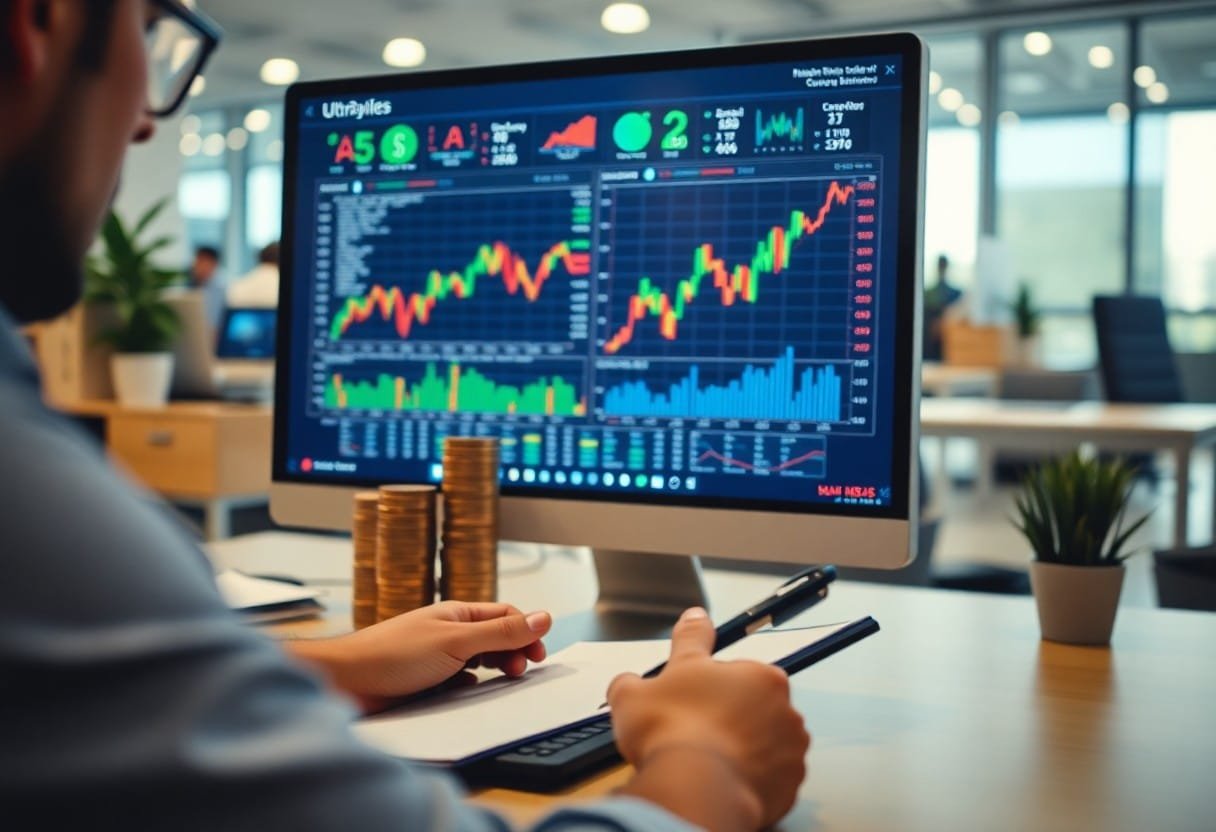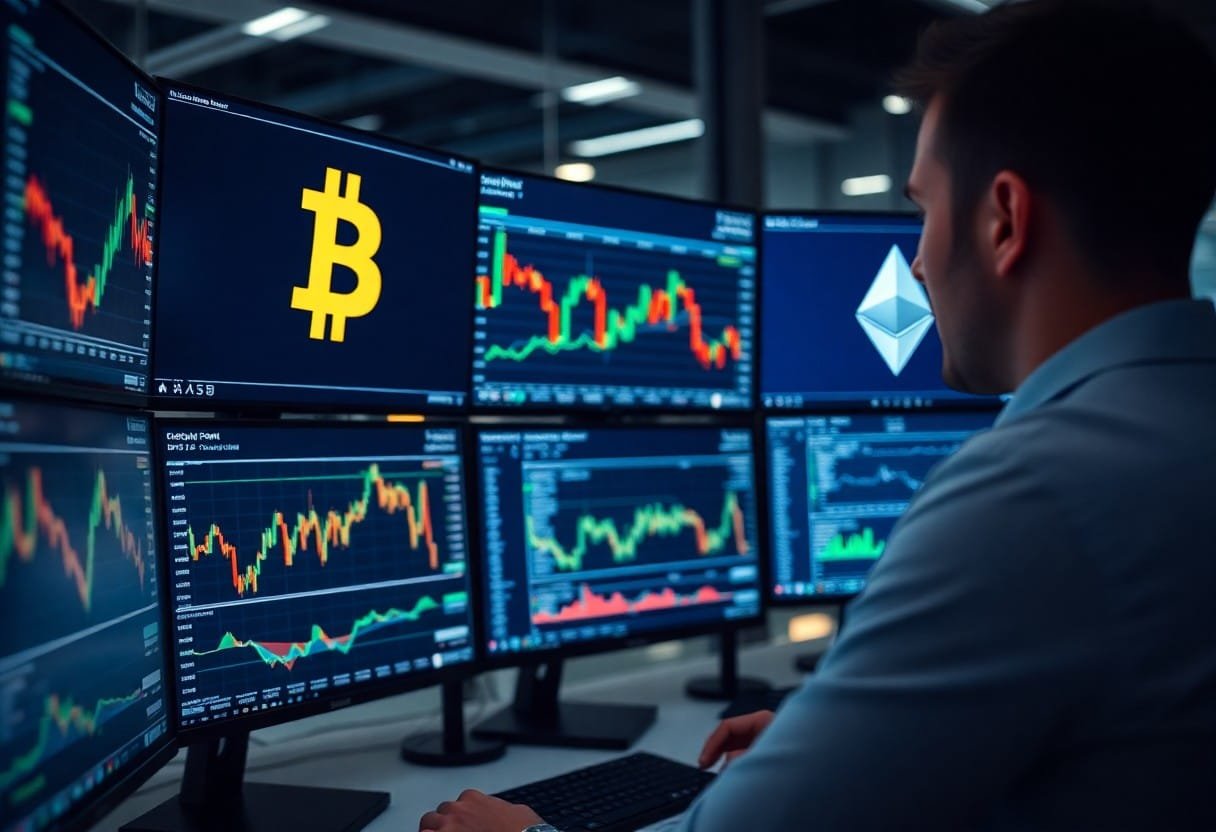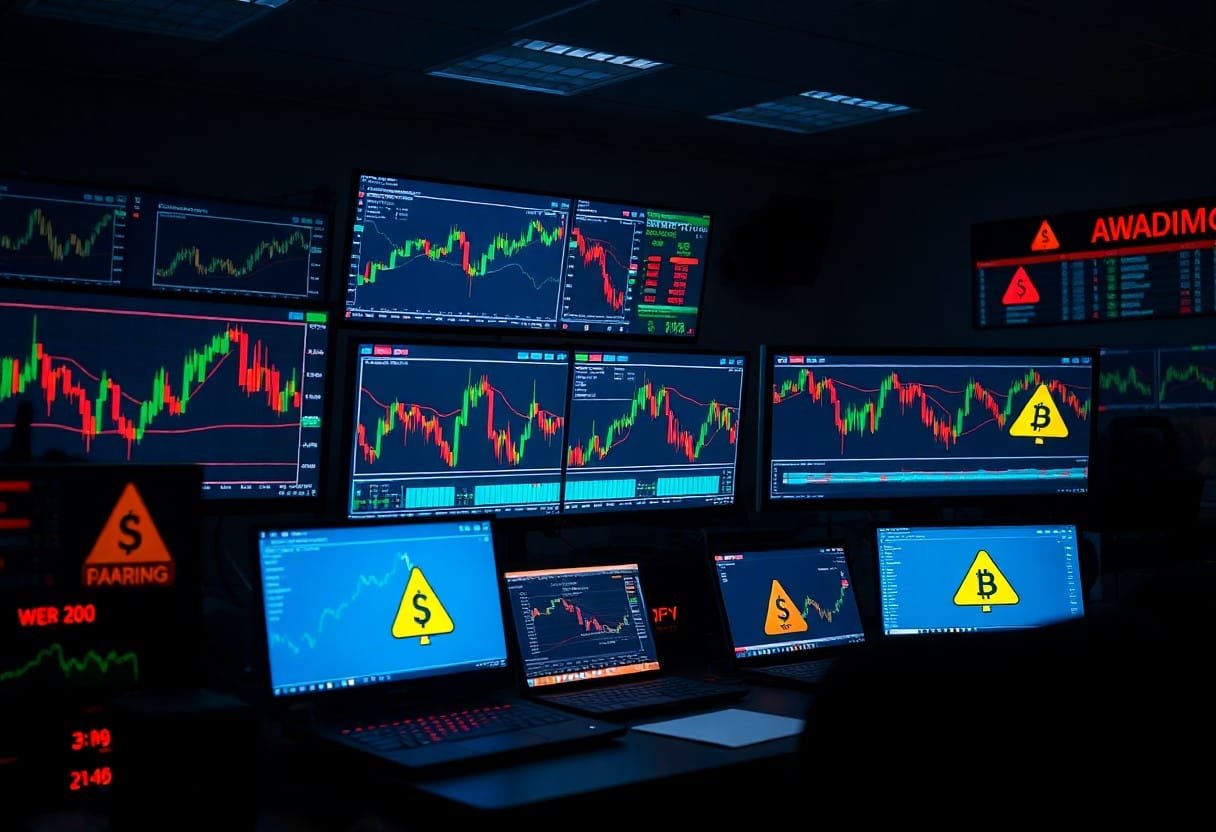As you consider submerging into the world of cryptocurrency trading, you’re likely wondering whether to take a long-term or short-term approach. You might be asking yourself which strategy is best for your investment goals and risk tolerance. Your trading style will significantly impact your potential returns, so it’s vital to understand the differences between these two approaches to make informed decisions that work for you.
Key Takeaways:
- Pertaining to trading strategies, understanding the difference between long-term and short-term crypto trading is important. Long-term trading involves holding onto assets for an extended period, typically months or years, to benefit from potential long-term growth, while short-term trading focuses on making quick profits from price fluctuations.
- The risk tolerance of an investor plays a significant role in determining whether long-term or short-term trading is more suitable. Investors with a low risk tolerance may prefer long-term trading, as it allows them to ride out market volatility, while those with a higher risk tolerance may opt for short-term trading to capitalize on rapid price movements.
- Adequate market analysis and research are vital for success in both long-term and short-term crypto trading. Investors should stay informed about market trends, news, and technological developments to make informed decisions and adjust their trading strategies accordingly, whether they are focusing on long-term growth or short-term gains.
Defining Trading Strategies
Before venturing into the world of crypto trading, you need to understand the different trading strategies available to you. Your approach will depend on your goals, risk tolerance, and market analysis.
Long-term Crypto Trading
Anyway, when it comes to long-term crypto trading, you’re looking at holding onto your assets for an extended period, often months or even years, to ride out market fluctuations and potentially reap significant rewards.
Short-term Crypto Trading
Alternatively, when considering short-term crypto trading, you’re focusing on making quick gains, often within days or weeks, by taking advantage of short-term price movements and trends.
In addition, as you explore short-term crypto trading, you’ll need to stay up-to-date with market news and analysis, using tools like technical indicators and charts to inform your decisions and adjust your strategy as needed to maximize your returns and minimize losses.
Market Analysis
Any trader knows that market analysis is the backbone of successful trading, and this holds true for both long-term and short-term crypto trading, as you need to understand the market dynamics to make informed decisions about your investments.
Trends and Patterns
Beneath the surface of market analysis, you’ll find trends and patterns that can help you predict future price movements, and as you examine deeper, you’ll discover that identifying these trends can make a significant difference in your trading strategy.
Risk Management
The key to successful trading lies in your ability to manage risk, and as you navigate the world of crypto trading, you’ll need to develop a risk management strategy that works for you, taking into account your investment goals and risk tolerance.
Also, as you develop your risk management strategy, you’ll want to consider setting stop-loss orders, diversifying your portfolio, and staying up-to-date with market news, all of which can help you minimize losses and maximize gains, allowing you to trade with confidence and achieve your long-term or short-term goals.
Investment Goals
Unlike other investment strategies, crypto trading requires you to define your goals. You can learn more about Long and short positions in crypto, explained to make informed decisions.
Long-term Objectives
Around the time you start trading, you’ll want to consider your long-term objectives, and how you can achieve them through careful planning and patience, as you build your crypto portfolio.
Short-term Targets
Targets for short-term trading are often focused on quick gains, and you’ll need to be prepared to act fast to capitalize on market fluctuations.
Even with a focus on short-term targets, you should still take the time to thoroughly understand the market and make informed decisions to minimize your risk and maximize your gains, as you navigate the exciting world of crypto trading.
Risk and Reward
Keep in mind that your trading approach will significantly impact your risk exposure and potential returns. Your investment goals and risk tolerance will guide your decision between long-term and short-term crypto trading.
Long-term Investment Risks
Around the time you invest in cryptocurrencies for the long haul, you’ll face risks like market volatility, regulatory changes, and potential security threats to your assets.
Short-term Trading Risks
The risks you’ll encounter with short-term trading include rapid price fluctuations, high transaction fees, and the potential for significant losses if you make incorrect predictions.
And as you research into short-term trading, you’ll need to be prepared to act quickly and make swift decisions, as the crypto market can be highly unpredictable, and prices can change in a matter of minutes, affecting your potential profits or losses.
Market Volatility
Despite the potential for high rewards, crypto trading is known for its market volatility, which can be unsettling for you as a trader. You need to understand how it affects your trading strategy, whether you’re in for the long haul or a short-term gain.
Impact on Long-term Trading
Prior to making any long-term investment decisions, you should consider how market fluctuations might impact your portfolio over time, and adjust your strategy accordingly to mitigate potential losses and maximize your gains.
Impact on Short-term Trading
Before you explore short-term trading, you need to be aware that market volatility can significantly affect your trades, with prices changing rapidly, giving you limited time to make decisions that can make or break your trading session.
Impact of market volatility on your short-term trading can be significant, and you will need to develop strategies to navigate these rapid changes, such as setting stop-loss orders and staying up-to-date with market news, to help you make quick and informed decisions that can help minimize losses and maximize gains.
Trading Tools and Resources
For your crypto trading journey, having the right tools and resources is crucial. You’ll need to stay up-to-date with market trends and analysis to make informed decisions.
Technical Analysis
Around technical analysis, you’ll find various charts and indicators to help you predict price movements. You can use these tools to identify patterns and trends in the market.
Fundamental Analysis
For fundamental analysis, you’ll examine the underlying factors that affect a cryptocurrency’s value. You’ll look at the project’s team, technology, and market demand to determine its potential.
Analysis of a cryptocurrency’s fundamentals can help you understand its long-term potential. You’ll consider factors like the team’s experience, the technology’s scalability, and the market’s demand for the coin. By doing your research, you can make more informed decisions about your investments and avoid potential pitfalls.
Final Words
Now that you’ve explored the differences between long-term and short-term crypto trading, you can make an informed decision about your approach. You’ll choose the strategy that suits your financial goals and risk tolerance. As you launch on your crypto trading journey, you’ll learn and adapt, fine-tuning your strategy to optimize your returns and minimize losses, taking control of your financial future with confidence and patience.
FAQ
Q: What is the main difference between long-term and short-term crypto trading?
A: The primary difference between long-term and short-term crypto trading lies in the duration for which the cryptocurrencies are held. Long-term trading involves holding onto cryptocurrencies for an extended period, often months or years, with the expectation that their value will appreciate over time. This approach allows traders to ride out market fluctuations and potentially benefit from the overall growth of the cryptocurrency market. On the other hand, short-term trading, also known as day trading, involves buying and selling cryptocurrencies within a short period, usually within a day, to capitalize on the daily price movements and volatility in the market. This method requires constant monitoring of the market and can be more risky due to the rapid changes in cryptocurrency prices.
Q: Which trading strategy is more risky, long-term or short-term crypto trading?
A: Short-term crypto trading is generally considered more risky compared to long-term trading. The rapid price movements and high volatility in the cryptocurrency market can lead to significant losses if not managed properly. Short-term traders are exposed to the risks of market fluctuations, liquidity issues, and the potential for large price swings against their positions. Additionally, the need to constantly monitor the market and make quick decisions can lead to emotional trading, further increasing the risk. In contrast, long-term trading, while still subject to market risks, allows for a more stable approach, as traders can weather out short-term fluctuations in anticipation of long-term growth.
Q: How do I decide between long-term and short-term crypto trading?
A: The decision between long-term and short-term crypto trading depends on several factors, including your investment goals, risk tolerance, market knowledge, and the amount of time you can dedicate to monitoring the market. If you are looking for potentially higher returns and are willing to accept higher risks, short-term trading might be more appealing. However, if you prefer a more conservative approach, aiming for long-term growth with less frequent market interactions, long-term trading could be more suitable. It’s also important to have a solid understanding of the cryptocurrency market, including its trends, volatility, and the factors that influence price movements. Regardless of the strategy you choose, it’s important to set clear goals, manage your risk through proper position sizing and stop-loss orders, and stay informed about market developments to make informed trading decisions.
Please follow and like us:








